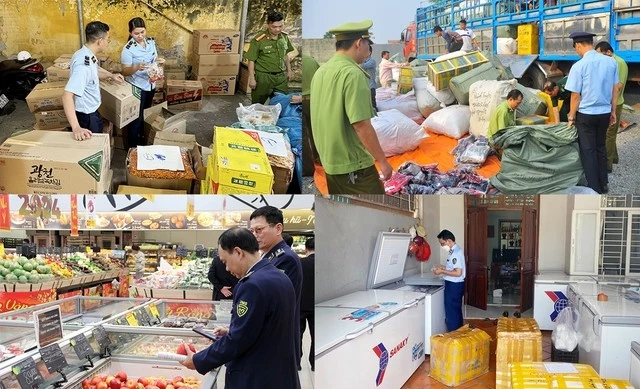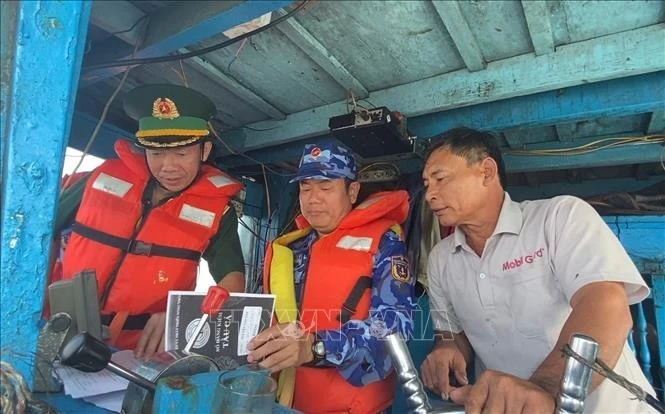Phu Yen is one of the localities frequently affected by natural disasters, particularly storms, floods, droughts, tidal surges, and river and coastal erosion, etc. In response to the increasingly unpredictable and complex nature of these events, the province has implemented various contingency plans and directed departments, agencies, and localities to remain ready and proactive in response efforts.
 |
| The military forces, police, and local residents rescuing a fishing vessel in Tuy An District that was sunk by sea waves |
According to Mr. Lu Ngoc Lam, Deputy Director of the Department of Agriculture and Environment, the impacts of climate change are becoming increasingly extreme and unpredictable, with the risk of natural disasters potentially occurring anytime, anywhere. Many areas are no longer considered safe. Therefore, prevention and proactive response must be prioritized and integrated into all socio-eco activities. The proactive approach to prevention and the early, decisive involvement of the entire political and social system will help minimize loss of life and property to the greatest extent possible.
Mr. Lu Ngoc Lam stated that the PPC has directed relevant agencies, units, and localities to proactively inspect, review, update, and supplement disaster prevention and control plans. They are also required to regularly assess the condition of infrastructure within their management scope, identify critical and vulnerable areas, allocate necessary resources, and prepare appropriate response plans and scenarios to ensure the safety of infrastructure, human lives, and property in affected areas. Local authorities are urged to further raise public awareness and provide training on disaster preparedness knowledge and skills.
In addition, the PPC has instructed all departments, agencies, and localities to continue proactively preparing for natural disasters in all possible scenarios. Authorities are to thoroughly inspect, review, and update disaster response plans, especially evacuation and relocation plans for residents in low-lying and high-risk areas. The implementation of central and provincial directives must be serious and effective, recognizing disaster prevention and search and rescue as an urgent, critical, and ongoing task of the entire political system and society. "Departments, sectors, and localities must proactively conduct training and simulation exercises for disaster prevention and search and rescue that closely reflect real-world conditions, following the "4 on-the-spot" principle and the "3 readiness" approach. They must consolidate and strengthen local disaster response teams, ensuring the readiness of human resources, equipment, and materials for timely disaster response and recovery. Budget contingency funds at all levels and sectors must be proactively used to support disaster recovery efforts in a timely manner," said Mr. Lu Ngoc Lam.
Mr. Nguyen Van Tien, Deputy Director of the Department of Dyke Management and Disaster Prevention and Control, proposed several solutions: In order to enhance the effectiveness of disaster prevention and control, it is crucial to improve early forecasting and warning capabilities for natural disasters. Central ministries, agencies, and localities should review and revise the operation procedures for inter-reservoir and individual reservoirs; reassess and update the design standards for sea dikes to ensure greater safety against storms and tidal surges in vulnerable areas; and upgrade key sections of sea and estuary dikes. Strengthening the management, protection, and development of forests should be prioritized, along with continuing the implementation of safe housing policies for people living in flood-prone regions. It is also essential to assess the impacts of infrastructure on flood drainage and propose appropriate mitigation measures. Research should be conducted to identify the causes of flooding and propose flood prevention solutions for river basins. Moreover, resources should be allocated to implement the national program on enhancing community awareness and disaster risk management based on community participation.







